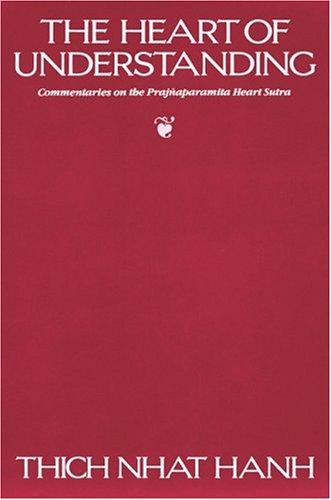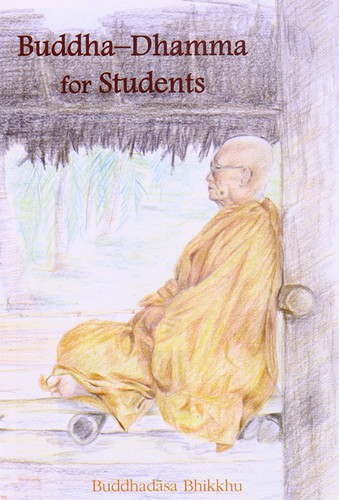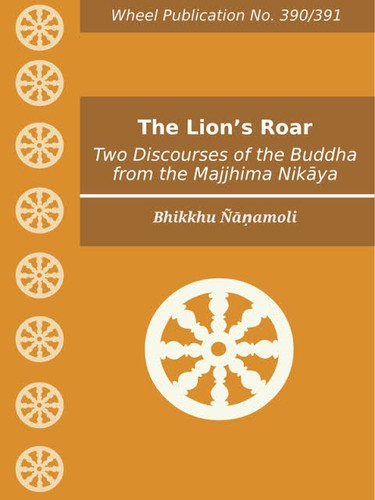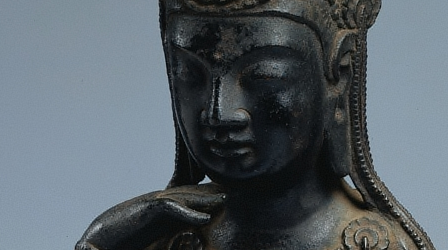Buddhist Philosophy
Also available: As a Syllabus
Subscribe to this topic via: RSS
The doctrines and perspectives which serve as the intellectual foundation for the practice as a whole.
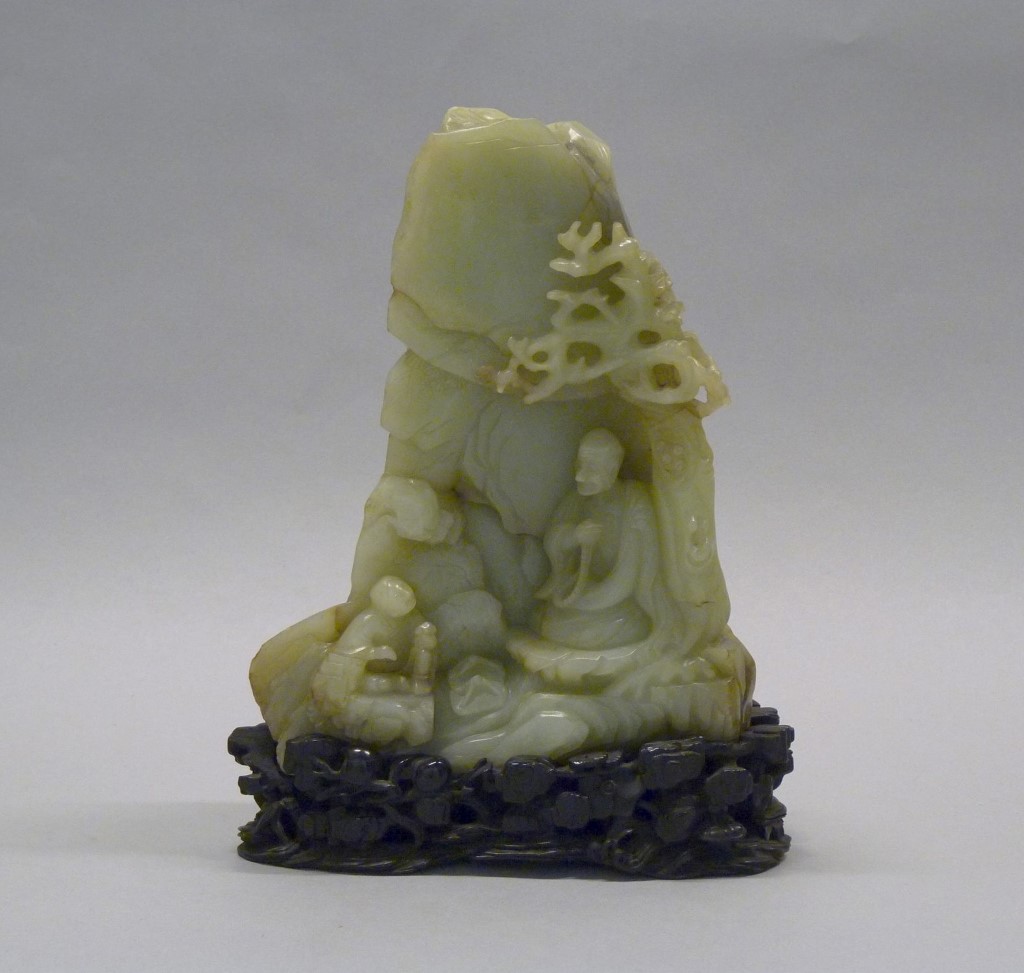
An 18th century, jade carving of an Arahant teaching from inside a crag photographed shortly before it was packed away into long-term storage at The Met.
Table of Contents
- Books (30)
- Canonical Works (98)
- Readings (49)
- Audio/Video (39)
- Reference Shelf (2)
- Related Topics (4)
Books (30)
Featured:
-
⭐ Recommended56 pages
See also:
Canonical Works (98)
Featured:
-
🥇 Best of
I have taught the Dhamma compared to a raft, for the purpose of crossing over, not for the purpose of holding onto. Understanding the Dhamma as taught compared to a raft, you should let go even of Dhammas, to say nothing of non-Dhammas.
-
⭐ Recommended
If there is rebirth, then what gets reborn?
19 pages -
🥇 Best of
Bhikkhus, before my enlightenment, while I was still only an unenlightened Bodhisatta, I too, being myself subject to birth, sought what was also subject to birth
-
⭐ Recommended
Indeed, I have long been tricked, cheated, and defrauded by this mind.
-
⭐ Recommended
One should not neglect wisdom, should preserve truth, should cultivate relinquishment, and should train for peace.
9 pages -
An early Buddhist text preserved in the Tibetan Kangyur Canon, explaining Dependent Origination.
-
⭐ Recommended
Wisdom and consciousness–these things are mixed, not separate. And you can never completely dissect them
7 pages -
If a person has faith, they preserve truth by saying, ‘Such is my faith.’ But they don’t yet come to the definite conclusion: ‘This is the only truth, other ideas are silly.’
-
⭐ Recommended
He doesn’t assume consciousness to be the self, or the self as possessing consciousness, or consciousness as in the self, or the self as in consciousness.
-
A thorough analysis of the Noble Eightfold Path, breaking it down into its mundane and supermundane versions.
-
⭐ Recommended
It is wrong perception that leads to the concepts of being and nonbeing.
-
⭐ Recommended
Formerly, Anurādha, and also now, I teach just suffering and the cessation of suffering.
-
Master Gotama, what is the cause and condition why human beings are seen to be inferior and superior?
-
Challenged to show the difference between his teaching and that of other ascetics, the Buddha points out that they speak of letting go, but do not really understand why. He then explains in great detail the suffering that arises from attachment to sensual stimulation.
6 pages -
The Buddha analyzes the six senses from six different perspectives and encourages us to see them all as “This is not mine, I am not this, this is not my self.”
6 pages -
When a space is enclosed by sticks, creepers, grass, and mud it becomes known as a ‘building’. In the same way, when a space is enclosed by bones, sinews, flesh, and skin it becomes known as a ‘form’.
-
Very similar to MN 41, this British recording of the Buddha’s words on ethics is included for your historical imagination.
-
Sāriputta is able to teach, assert, establish, clarify, analyze, and reveal the four noble truths.
-
⭐ Recommended
“Is what is impermanent, suffering, and subject to change fit to be regarded thus: ‘This is mine, this I am, this is my self’?”–“No, venerable sir.”
-
A monk wonders why the Buddha hasn’t disclosed certain cosmological facts, and the Buddha informs him that such views are not conducive to the ending of stress.
-
… by depending and relying on the six kinds of joy based on renunciation, abandon and surmount the six kinds of joy based on the household life
-
⭐ Recommended
… beings are intoxicated with life and engage in misconduct by body, speech, and mind. But when one often reflects upon [death], the intoxication with life is diminished.
-
One somewhat confusing point of Buddhist philosophy is that the three feelings (painful, neutral and pleasant) are all included under “dukkha.” Thankfully for us, a monk at the time of the Buddha decided to ask him about it.
-
I declare, Vaccha, rebirth for one with fuel, not for one without fuel.
-
Why now do you assume ‘a being’? Mara, is that your speculative view? This is a heap of sheer formations: Here no being is found.
-
⭐ Recommended
This not being, that is not;
from the cessation of this, that ceases. -
Someone with six qualities is able to enter the sure path
-
It is, Ānanda, because it is empty of self and of what belongs to self that it is said, ‘Empty is the world.’
-
The basic definition of nibbāna.
-
Bhikkhus, just as a stick thrown up into the air falls now on its bottom, now on its top, so too beings roam and wander on…
-
There is, monks, an unborn, unbecome, unmade, unconditioned.
See also:
Readings (49)
Featured:
-
🥇 Best of
To approach what, for the want of a better term, we call the mythic portions of the Nikayas with the attitude that such categories as “mythic symbol” and “literally true” are absolutely opposed is to adopt an attitude that is out of time and place. It seems to me that in some measure we must allow both a literal and a psychological interpretation. Both are there in the texts.
35 pages -
🥇 Best of
We wouldn’t say “this is proof of reincarnation,” but I would say it’s strong evidence of something like it.
22 pages -
⭐ Recommended
In general, we humans are a self-interpreting species for whom the practice of recollecting and redescribing ourselves is a crucial necessity. For us the reconstruction of identity is a continuous process wherein the past is selectively crafted into a history. It is a creative and self-constitutive exercise. We come to know each other and ourselves not by exchanging resumes (mere inventories of events), but by telling our stories. And our stories change as we do; they reflect what actually happened and what we think is worth remembering, they reflect who we were, who we are, and who we would like to become.
-
A thorough description of what makes someone fully enlightened, explaining how arahantship is the culmination and perfection of the path.
-
While dependent origination can be understood as describing both our moment-to-moment “rebirth” as well as rebirth from lifetime-to-lifetime, many modern scholars skeptical of rebirth have downplayed the latter interpretation. Ajahn Brahm defends the multiple-lifetime interpretation of Paṭicca-samuppāda by citing the Buddha’s own analysis of its twelve factors.
-
Venerable Analayo shows how the Four Noble Truths are akin to a medical treatment plan—from diagnosis to cure—and explains “the significance of [their] realization as the fulfilment of right view.”
-
An eye is a dangerous thing. Left unguarded and misunderstood it unleashes a world “out there” that we become infatuated with, to our detriment. When we understand fully that the eye, the world and the interface between them are fabricated, the world ends, the infatuation ends, saṃsāra ends.
-
Let’s consider how a person, me, arises in your experience. First certain colors and shapes arise, largely maroon. A sense of foreboding ensues. The features arise: “monk,” “shaveling,” then the discernment “worthy of offerings.” The features arise: “wire-rimmed glasses,” “wry grin” and finally “Bhikkhu Cintita,” then the discernment “maybe not so worthy of offerings.” At some point in this process you are convinced that I exist
-
Does this twin-category process pluralism avoid the problems of substance-dualism?
-
… the Buddha confined himself to asserting statements which were true and useful, though pleasant or unpleasant, so that the Dhamma is pragmatic, although it does not subscribe to a pragmatic theory of truth.
-
In the context of Christian missionary activity, it seems again entirely natural that rebirth is seen as one type of belief that needs to be replaced with another belief, which in this case is belief in an almighty god. However, the perception of the rebirth doctrine as a belief to be either accepted on faith or else rejected does not seem to capture fully the position this doctrine occupies in early Buddhist thought.
-
This essay gives an introduction to the three characteristics and, by analysis, their function.
-
The key principle in Buddhism is that understanding sets you free. It’s not about attaining or creating anything, it’s about simply understanding things as they are
-
The teaching of the four noble truths reflects a medical scheme of diagnosis, which proceeds from recognition of the disease, dukkha, to identifying its cause, craving.
-
Data analyses showed that Buddhists were more likely to attribute bad outcomes to internal, stable, and global causes, but their well-being was less affected by it. Thus, these results indicate that the “depressive” attributional style is not that depressive for Buddhists, after all.
-
Persons of integrity provide the world with real progress.
-
🥇 Best of
During my first weeks with my teacher, Ajaan Fuang, I began to realize that he had psychic powers.
-
… the Bhikkhu Sangha alone can ordain women as bhikkhunis, based on the Buddha’s statement: “I allow you, bhikkhus, to ordain Bhikkhunis.” This allowance was never rescinded by the Buddha.
-
The fruition of deeds as karma in the future is a key component of Buddhist philosophy, yet its workings remain rather enigmatic.
-
Beside the creek, one can forget language altogether and watch meaning slip away with the current. It is humbling and awe-inspiring to merge into the creekside, just another natural formation.
See also:
Audio/Video (39)
Featured:
-
⭐ Recommended
These classic recordings give a thorough and dense overview of current, orthodox Theravada doctrine.
-
🥇 Best of
Ajahn Brahm discusses the Buddha’s qualities and tells some stories from his time as a monk in Thailand.
-
⭐ Recommended
Ajahn Brahm tells us all the secrets of life: from how to find a partner to getting what you really want.
-
Gives a basic introduction to Early Buddhist Philosophy, with a special emphasis on how it differs from later doctrinal developments.
4h 2m -
 2h 52m
2h 52m -
Ajahn Brahmali walks us through this sutta on Right Concentration and explains how it changed slightly in the Theravada recension.
-
And once we become familiar with the nature of objects, because of seeing that, one sees the implications — “this thing that I’m basing my happiness on is uncertain, is subject to change, is going to pass away”
-
All conditioned phenomena are like a dream, an illusion, a reflection, a shadow, or a flash of lightning, or a few drops on the morning grass. So, for example, by the time you see the flash of lightning, it’s already gone. In no time, it’s come from somewhere and it’s gone somewhere else. You see it, and it’s gone. Which is to say that the world is something that you can see and experience but you can’t obtain or possess it.
-
A relaxed talk on MN 148 and on our stubborn ignorance.
-
On Dependent Origination and its reversal to liberation.
-
A sick Ajahn Brahm explains for us the “Great Aggregate of Suffering” and why everyone quarrels so much.
-

-
On how we can distinguish Buddhism from other philosophies.
-

-
Bhante Yuttadhammo outlines the five preparatory factors we need to be open to the truth and to see the world from the right perspective, hopefully illuminating why Right View can be thought of as both first and last step of the Noble Eightfold Path.
-
A very brief introduction to the four foundations of mindfulness: the way to experience the five aggregates directly.
-
🥇 Best of
 5 min
5 min -

-
I have never yet had the question why good things happen.
See also:
